Posted on May 20th, 2019 by Mary Lord
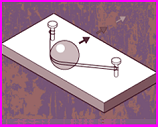 Students in grades 4 to 9 learn about projectile motion by designing, building, and testing a machine that can kick a Ping-Pong ball into a cup lying on its side 12 inches away.
Students in grades 4 to 9 learn about projectile motion by designing, building, and testing a machine that can kick a Ping-Pong ball into a cup lying on its side 12 inches away.
Read More
Filed under: Class Activities, Grades 6-8, Grades 9-12, Grades K-5, Lesson Plans | Comments Off on Build a Kicking Machine
Tags: ball, Class Activities, Engineering Design, forces and motion, Grades 6-8, Grades K-5, Kicking Machine, kinetic energy, Lesson Plan, PBS Design Squad, Physics, projectile motion, simple machines, soccer
Posted on May 3rd, 2019 by Mary Lord
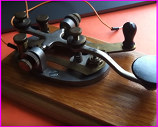 Students in grades 4 to 8 or higher learn the basics of electricity and sound by designing and building a working telegraph system using batteries, wire, and other simple parts. They then use their telegraphs – one of history’s most important inventions – to send and receive messages.
Students in grades 4 to 8 or higher learn the basics of electricity and sound by designing and building a working telegraph system using batteries, wire, and other simple parts. They then use their telegraphs – one of history’s most important inventions – to send and receive messages.
Read More
Filed under: Class Activities, Grades 6-8, Grades 9-12, Lesson Plans | Comments Off on Build a Telegraph Tapper
Tags: Class Activities, electricity, Energy, Golden spike transcontinental railroad, History, Lesson Plan, Morse code, sound, telecommunications, telegraph, train
Posted on February 23rd, 2019 by Mary Lord
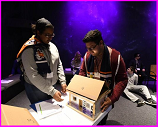 The UL Innovative Education Award awards up to $250,000 annually to U.S. and Canadian youth empowerment and nonprofit groups with proven programs that use the environment as a pathway to STEM learning (E-STEM) and community engagement. Apply by March 12, 2019.
The UL Innovative Education Award awards up to $250,000 annually to U.S. and Canadian youth empowerment and nonprofit groups with proven programs that use the environment as a pathway to STEM learning (E-STEM) and community engagement. Apply by March 12, 2019.
Read More
Filed under: Grades 9-12, K-12 Outreach Programs, Special Features | Comments Off on UL Innovative Education Award
Tags: Contest, Curriculum, Environmental Education, Environmental Engineering, Environmental science, STEM education, UL Innovative Education Awards
Posted on February 23rd, 2019 by Mary Lord
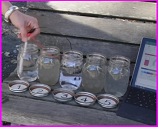 Middle school students explore how fertilizers and other solids affect water quality by building and using sensors to measure the electrical conductivity of water samples. They then create data tables and investigate possible sources of pollutants using digital visualization tools.
Middle school students explore how fertilizers and other solids affect water quality by building and using sensors to measure the electrical conductivity of water samples. They then create data tables and investigate possible sources of pollutants using digital visualization tools.
Read More
Filed under: Class Activities, Grades 6-8, Grades 9-12, K-12 Outreach Programs, Lesson Plans | Comments Off on Measuring Water Quality to Assess Human Impact
Tags: arduino, Class Activities, data analysis, electrical circuits, Electrical Engineering, Environmental Engineering, Excel, Grades 6-8, HackingSTEM Microsoft, hydrology, Lesson Plan, Pollution, sensors, water quality
Posted on February 8th, 2019 by Mary Lord
 In this activity, teams of students in grades 6 to 8 will learn about the engineering design process and how a one-way valve works by creating heart valves from tape, plastic tubing, and other materials.
In this activity, teams of students in grades 6 to 8 will learn about the engineering design process and how a one-way valve works by creating heart valves from tape, plastic tubing, and other materials.
Read More
Filed under: Class Activities, Grades 6-8, Grades 6-8, Grades 6-8, Grades 9-12, Lesson Plans | 1 Comment »
Tags: biomdedical engineering, Class Activities, device, Engineering Design Process, Grades 6-8, heart, Lesson Plan, Mechanical engineering, valve
Posted on January 11th, 2019 by Mary Lord
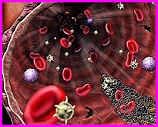 In this NGSS-aligned activity, high school students work as biomedical engineers to find liquid solutions that can clear away polyvinyl acetate polymer “blood clots” in model arteries made of clear, flexible tubing. Teams create samples of the “blood clot” polymer to discover the concentration of the model clot and then test a variety of liquids to determine which most effectively breaks it down. Students learn the importance of the testing phase in the engineering design process, because they are only given one chance to present the team’s solution and apply it to the model blood clot.
In this NGSS-aligned activity, high school students work as biomedical engineers to find liquid solutions that can clear away polyvinyl acetate polymer “blood clots” in model arteries made of clear, flexible tubing. Teams create samples of the “blood clot” polymer to discover the concentration of the model clot and then test a variety of liquids to determine which most effectively breaks it down. Students learn the importance of the testing phase in the engineering design process, because they are only given one chance to present the team’s solution and apply it to the model blood clot.
Read More
Filed under: Class Activities, Grades 9-12, Lesson Plans | Comments Off on Let the Blood Flow: Biomedical Artery Unclogging Experiment
Tags: arteries, Biomedical Engineering, Chemistry, circulatory system, Class Activities, Grades 9-12, heart, Lesson Plan, NGSS, stent, TeachEngineeirng, UCLA SEEK GK-12 program, valves
Posted on January 10th, 2019 by Mary Lord
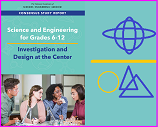 A major new consensus study from the National Academies of Sciences, Engineering, and Medicine, underscores the vital role of teachers in creating the hands-on, multidisciplinary STEM education for every student envisioned by the Next Generation Science Standards. The report also calls for more creation and sharing of free educational materials so teachers no longer have to spend hours each week searching for curriculum.
A major new consensus study from the National Academies of Sciences, Engineering, and Medicine, underscores the vital role of teachers in creating the hands-on, multidisciplinary STEM education for every student envisioned by the Next Generation Science Standards. The report also calls for more creation and sharing of free educational materials so teachers no longer have to spend hours each week searching for curriculum.
Read More
Filed under: For Teachers, Grades 6-8, Grades 9-12, K-12 Education News, Special Features | Comments Off on STEM Ed. Report: Teachers Key to Reform
Tags: Education Policy, Engineering Design, National Academies of Sciences, NGSS, Public Policy, Science and Engineering for Grades 6-12: Investigation and Design at the Center, STEM education, STEM equity
Posted on January 9th, 2019 by Mary Lord
 Middle school students address misconceptions and learn about thermal energy transfer while investigating the insulating properties of various materials. They then follow the engineering design process to create, test, and redesign a structure (igloo) to keep an ice cube (penguin) from melting.
Middle school students address misconceptions and learn about thermal energy transfer while investigating the insulating properties of various materials. They then follow the engineering design process to create, test, and redesign a structure (igloo) to keep an ice cube (penguin) from melting.
Read More
Filed under: Class Activities, Grades 6-8, Grades 9-12, Lesson Plans | Comments Off on Save the Penguins
Tags: arctic engineering, Class Activities, Curriculum, Energy, Environmental Engineering, Grades 6-8, Grades 9-12, habitat, heat transfer misconceptions, ice, insulation, Lesson Plan, NGSS aligned, Physics, polar ice, Save the Penguins
Posted on January 3rd, 2019 by Mary Lord
 Middle and high school students learn about the importance of the polar regions by connecting with scientists and the data generated by their cutting-edge research on penguins and ocean environments.
Middle and high school students learn about the importance of the polar regions by connecting with scientists and the data generated by their cutting-edge research on penguins and ocean environments.
Read More
Filed under: Class Activities, Grades 6-8, Grades 9-12, Web Resources | Comments Off on Polar Ice
Tags: Class Activities, Climate Change, Environmental Engineering, Grades 6-8, Grades 9-12, Lesson Plan, Liesl Hotaling, Marine Science, NSTA, oceanography, penguins, polar ice, polar research, Resources for Teachers
 Students in grades 4 to 9 learn about projectile motion by designing, building, and testing a machine that can kick a Ping-Pong ball into a cup lying on its side 12 inches away.
Students in grades 4 to 9 learn about projectile motion by designing, building, and testing a machine that can kick a Ping-Pong ball into a cup lying on its side 12 inches away.








 Students in grades 4 to 8 or higher learn the basics of electricity and sound by designing and building a working telegraph system using batteries, wire, and other simple parts. They then use their telegraphs – one of history’s most important inventions – to send and receive messages.
Students in grades 4 to 8 or higher learn the basics of electricity and sound by designing and building a working telegraph system using batteries, wire, and other simple parts. They then use their telegraphs – one of history’s most important inventions – to send and receive messages. The UL Innovative Education Award awards up to $250,000 annually to U.S. and Canadian youth empowerment and nonprofit groups with proven programs that use the environment as a pathway to STEM learning (E-STEM) and community engagement. Apply by March 12, 2019.
The UL Innovative Education Award awards up to $250,000 annually to U.S. and Canadian youth empowerment and nonprofit groups with proven programs that use the environment as a pathway to STEM learning (E-STEM) and community engagement. Apply by March 12, 2019. Middle school students explore how fertilizers and other solids affect water quality by building and using sensors to measure the electrical conductivity of water samples. They then create data tables and investigate possible sources of pollutants using digital visualization tools.
Middle school students explore how fertilizers and other solids affect water quality by building and using sensors to measure the electrical conductivity of water samples. They then create data tables and investigate possible sources of pollutants using digital visualization tools. In this activity, teams of students in grades 6 to 8 will learn about the engineering design process and how a one-way valve works by creating heart valves from tape, plastic tubing, and other materials.
In this activity, teams of students in grades 6 to 8 will learn about the engineering design process and how a one-way valve works by creating heart valves from tape, plastic tubing, and other materials.  In this NGSS-aligned activity, high school students work as biomedical engineers to find liquid solutions that can clear away polyvinyl acetate polymer “blood clots” in model arteries made of clear, flexible tubing. Teams create samples of the “blood clot” polymer to discover the concentration of the model clot and then test a variety of liquids to determine which most effectively breaks it down. Students learn the importance of the testing phase in the engineering design process, because they are only given one chance to present the team’s solution and apply it to the model blood clot.
In this NGSS-aligned activity, high school students work as biomedical engineers to find liquid solutions that can clear away polyvinyl acetate polymer “blood clots” in model arteries made of clear, flexible tubing. Teams create samples of the “blood clot” polymer to discover the concentration of the model clot and then test a variety of liquids to determine which most effectively breaks it down. Students learn the importance of the testing phase in the engineering design process, because they are only given one chance to present the team’s solution and apply it to the model blood clot. A major new consensus study from the National Academies of Sciences, Engineering, and Medicine, underscores the vital role of teachers in creating the hands-on, multidisciplinary STEM education for every student envisioned by the Next Generation Science Standards. The report also calls for more creation and sharing of free educational materials so teachers no longer have to spend hours each week searching for curriculum.
A major new consensus study from the National Academies of Sciences, Engineering, and Medicine, underscores the vital role of teachers in creating the hands-on, multidisciplinary STEM education for every student envisioned by the Next Generation Science Standards. The report also calls for more creation and sharing of free educational materials so teachers no longer have to spend hours each week searching for curriculum. Middle school students address misconceptions and learn about thermal energy transfer while investigating the insulating properties of various materials. They then follow the engineering design process to create, test, and redesign a structure (igloo) to keep an ice cube (penguin) from melting.
Middle school students address misconceptions and learn about thermal energy transfer while investigating the insulating properties of various materials. They then follow the engineering design process to create, test, and redesign a structure (igloo) to keep an ice cube (penguin) from melting.  Middle and high school students learn about the importance of the polar regions by connecting with scientists and the data generated by their cutting-edge research on penguins and ocean environments.
Middle and high school students learn about the importance of the polar regions by connecting with scientists and the data generated by their cutting-edge research on penguins and ocean environments.